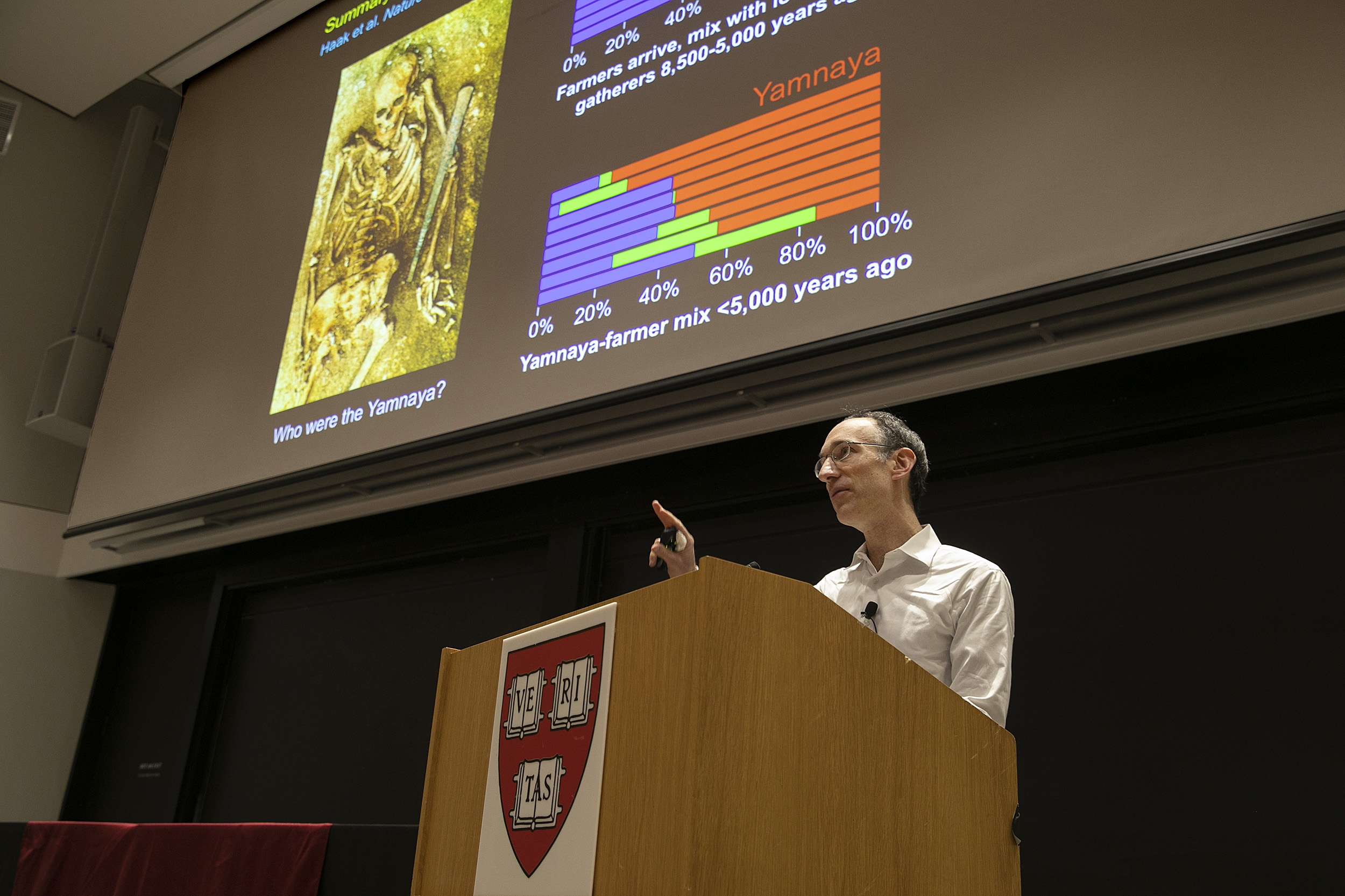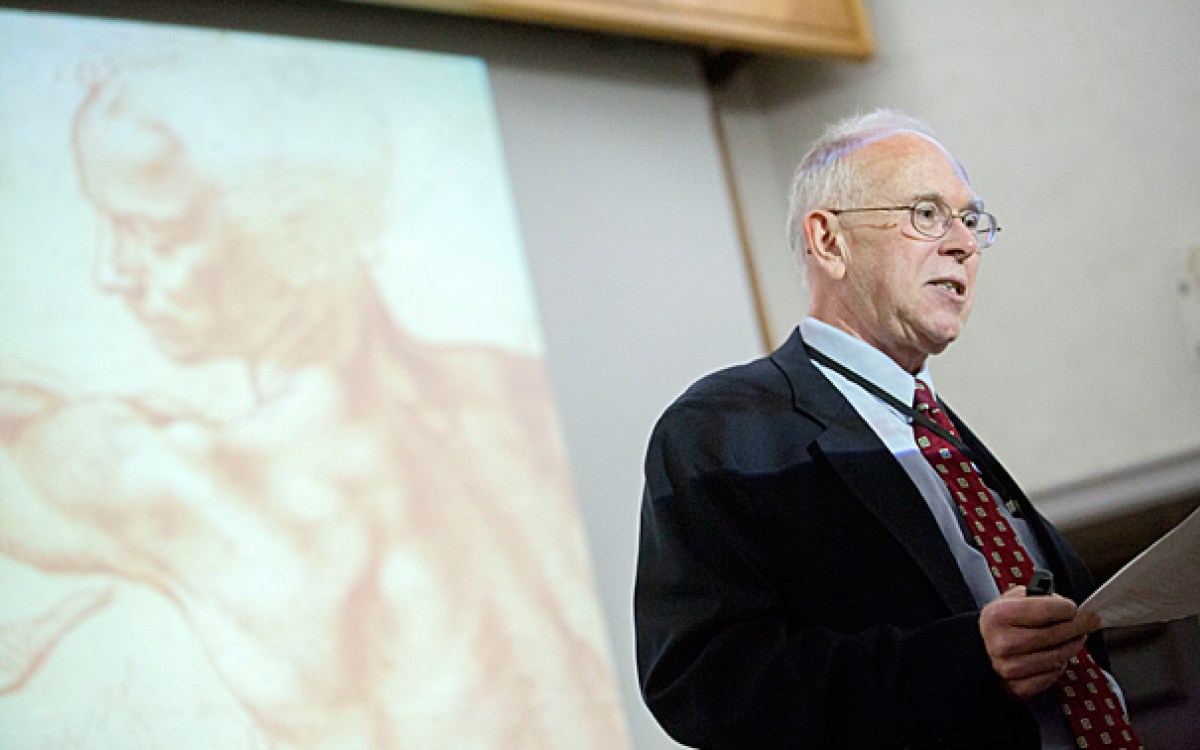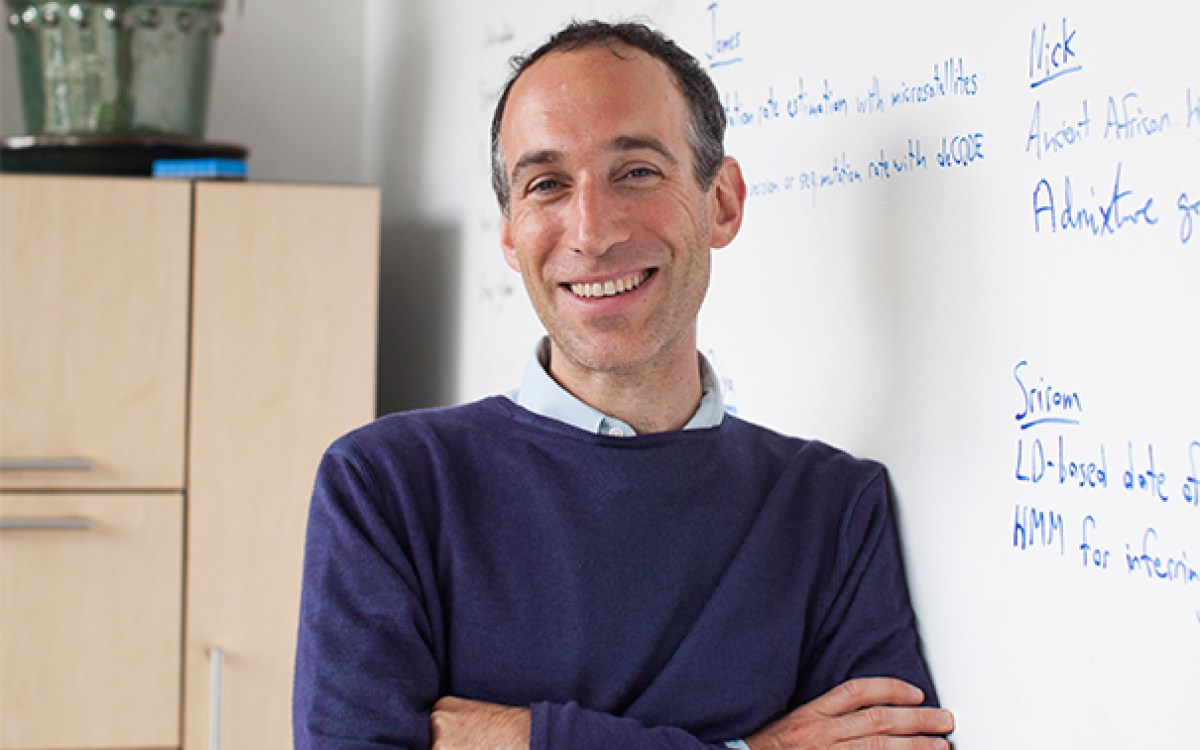
David Reich talks about the deep history of people in Europe and Southeast Asia relating to ancient DNA, at the Science Center.
Jon Chase/Harvard Staff Photographer
DNA reveals we are all genetic mutts
Geneticist David Reich discusses how migration shaped modern human populations
Examination of ancient DNA can provide profound insights into human history, according to David Reich, a professor of genetics at Harvard Medical School. His talk at the Science Center on Wednesday, “A Tale of Two Subcontinents: The Parallel Prehistories of Europe and South Asia,” was drawn from his new book, “Who We Are and How We Got Here: Ancient DNA and the New Science of the Human Past,” showing what recent studies have revealed about the prehistory of Europe and southern Asia.
Reich “reshaped our understanding of human prehistory,” according to a New York Times profile last year, with the publication of DNA from the genomes of 938 ancient humans — more than all other research teams working in the field combined. This research, the story noted, has shed light on the spread of agriculture and the peopling of the planet.
Reich began his lecture by explaining how his work is done: With recent advances in DNA sequencing, it is now possible to extract sequences from humans who lived tens of thousands of years ago by grinding skeletal remains — specifically parts of the ear where much DNA is concentrated — into a powder to be examined.
“It’s similar to the introduction of microscopes,” Reich said. “We can now look at worlds that were never previously looked at. And when we look at ancient DNA from past worlds, the stories don’t conform to what we thought. The information that comes from sequencing the whole genome makes it possible to answer questions that are profoundly different, and more precise than ever before.”
One phenomenon Reich set out to examine is the parallel histories of Europe and South Asia. Both regions saw the arrival of agriculture thousands of years ago, and they speak related Indo-European languages that eventually arrived in both regions. In both cases, the transformations happened through migration.
In Europe, Reich said, farmers arrived from Anatolia thousands of years ago and mixed with the local hunter-gatherer population; this is the largest source of ancestry in Europeans today. A second, later migration from the Eurasian Steppe happened at roughly the time Stonehenge was built. “People [from the Steppes] took advantage of two powerful inventions: the wheel and the domestication of the horse,” said Reich. “They were able to exploit the grasslands of the Steppes in a way that hadn’t been done before.” The Steppe migration resulted in a 90 percent replacement of the population.
A similar prehistory occurred in the Iberian Peninsula where a third population, also arrived from the Steppes, joined the hunter-gather and farmer groups. In this case, DNA research shows that the third population was exclusively male: While only 40 percent of the population about 6,000 years ago comes from the Steppes, 100 percent of the Y chromosomes do.
In India, a migration after the Ice Age caused a blending of two ancestries, called Ancestral North Indian and Ancestral South Indian. “People in India today are a mixture of two different portions of these ancestral populations,” Reich said. Genetics also show that India’s caste system, previously thought to have developed under colonial rule, was in place thousands of years earlier.
One question genetics can’t answer, he said in response to an audience question, is exactly how population replacement happened. “In the case of Britain after 6,000 years ago,” he asked, “did new people come in and kill the old ones, or just crowd them out? We just don’t know. What genetic data does is provide facts about movements of people and changes in groups. We are not the experts to describe how that happened.”
One important takeaway from this study, he said, is that humans inherently derive from mixed ancestry.
“No population is, or ever could be, pure,” he said. “Ancient DNA reveals that the mixing of groups extremely different from each other is a common feature of human nature. We do not live in unusual times; profound events have occurred in our past. We should learn and feel more connected from that.”







